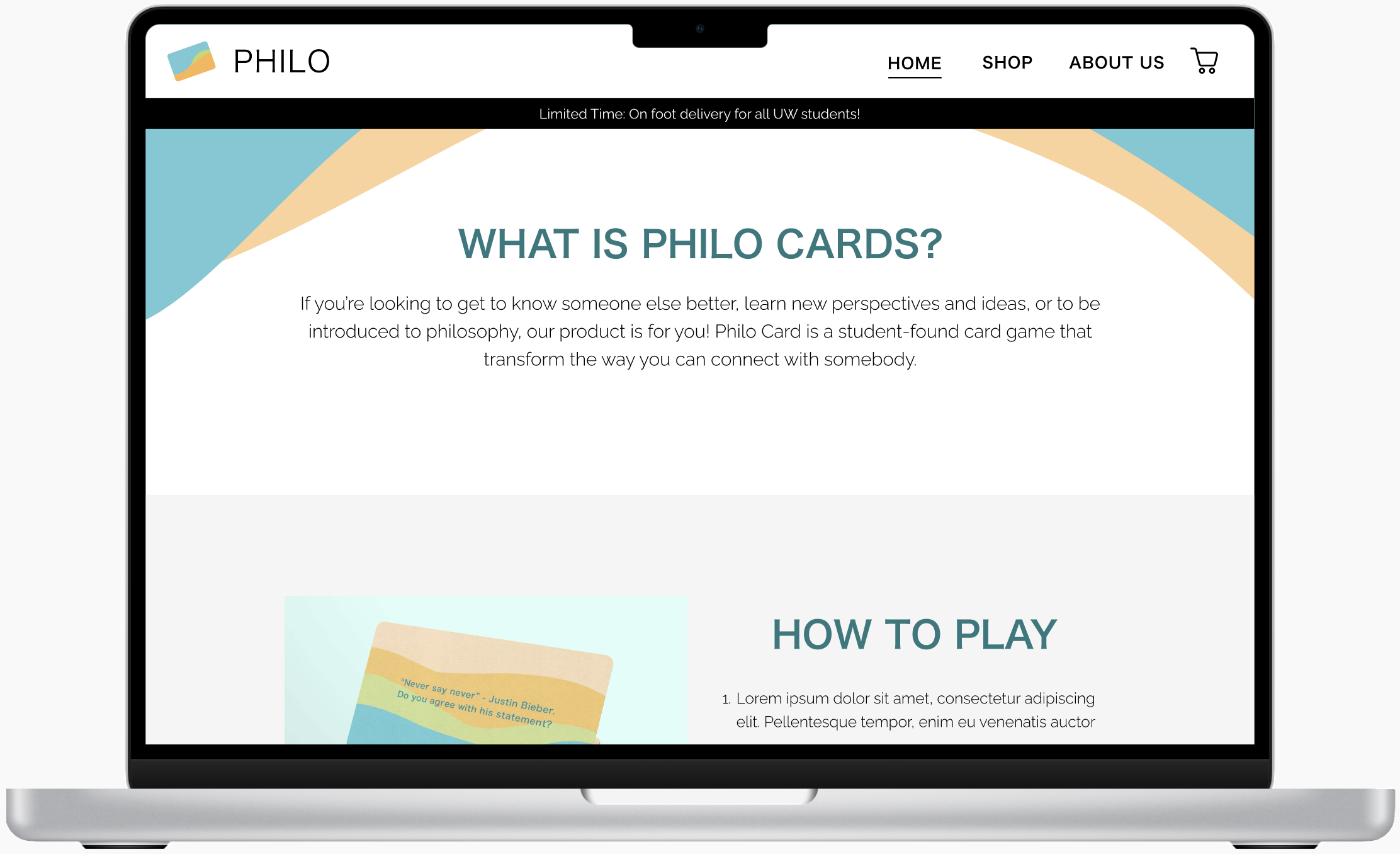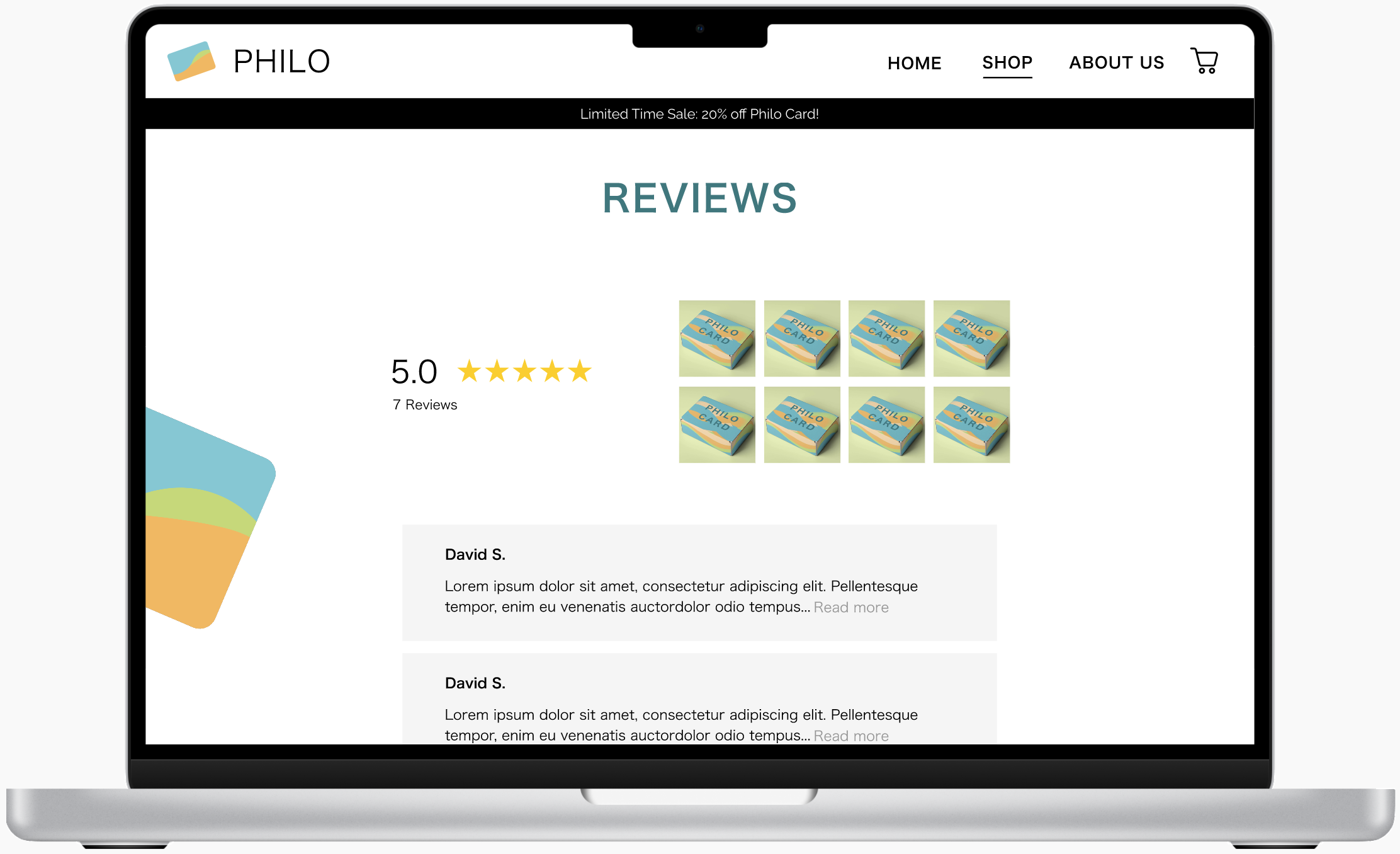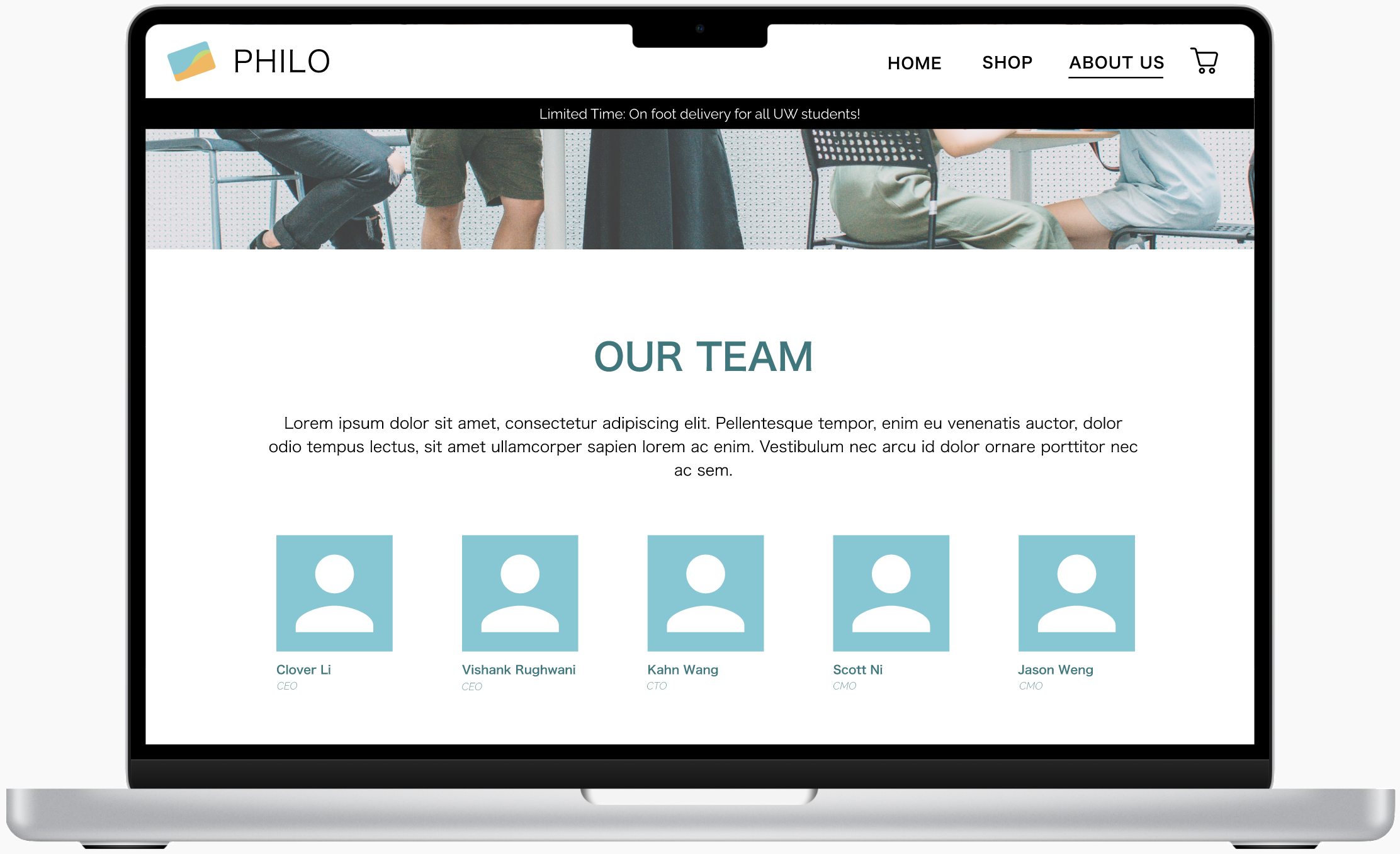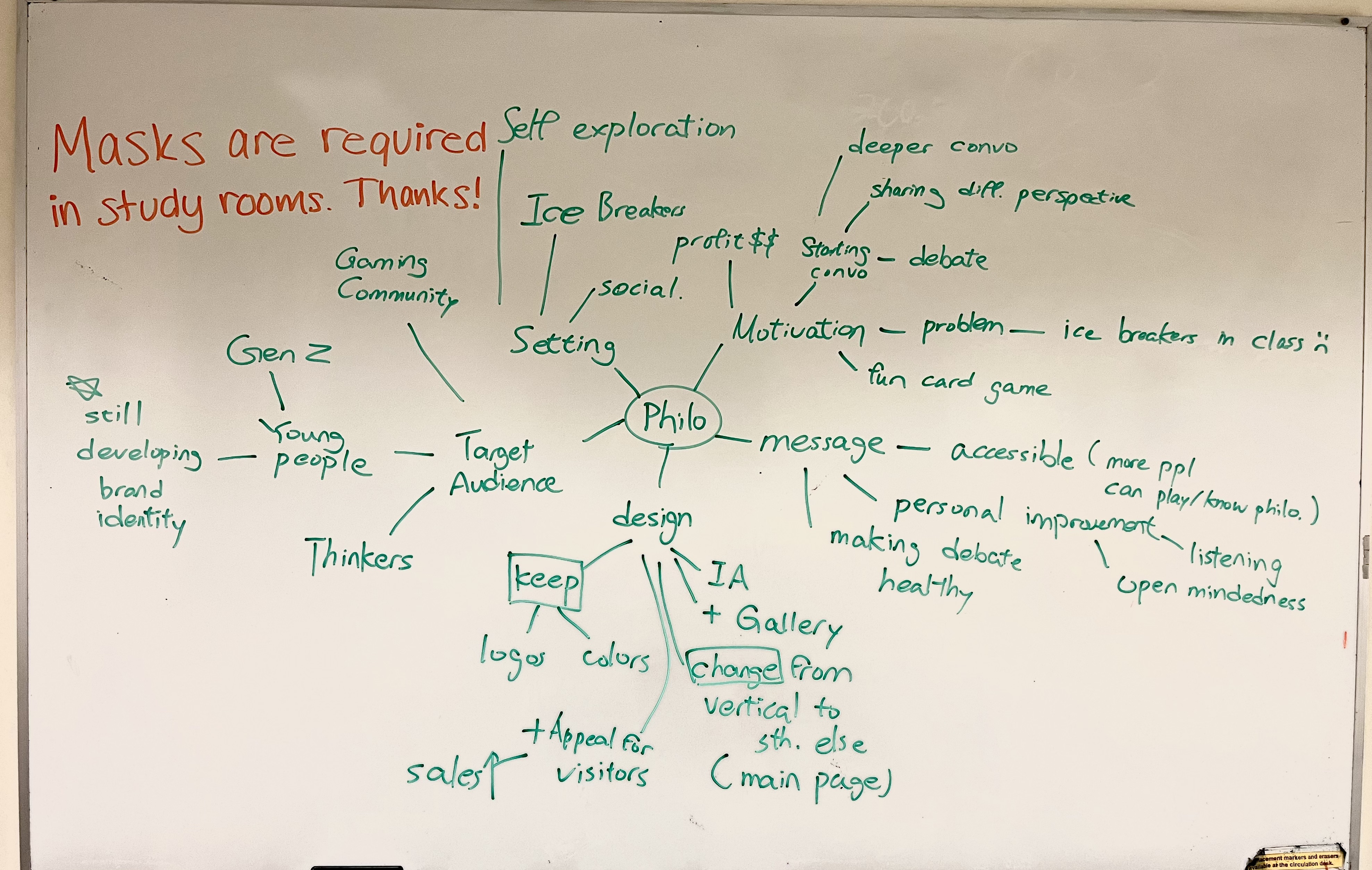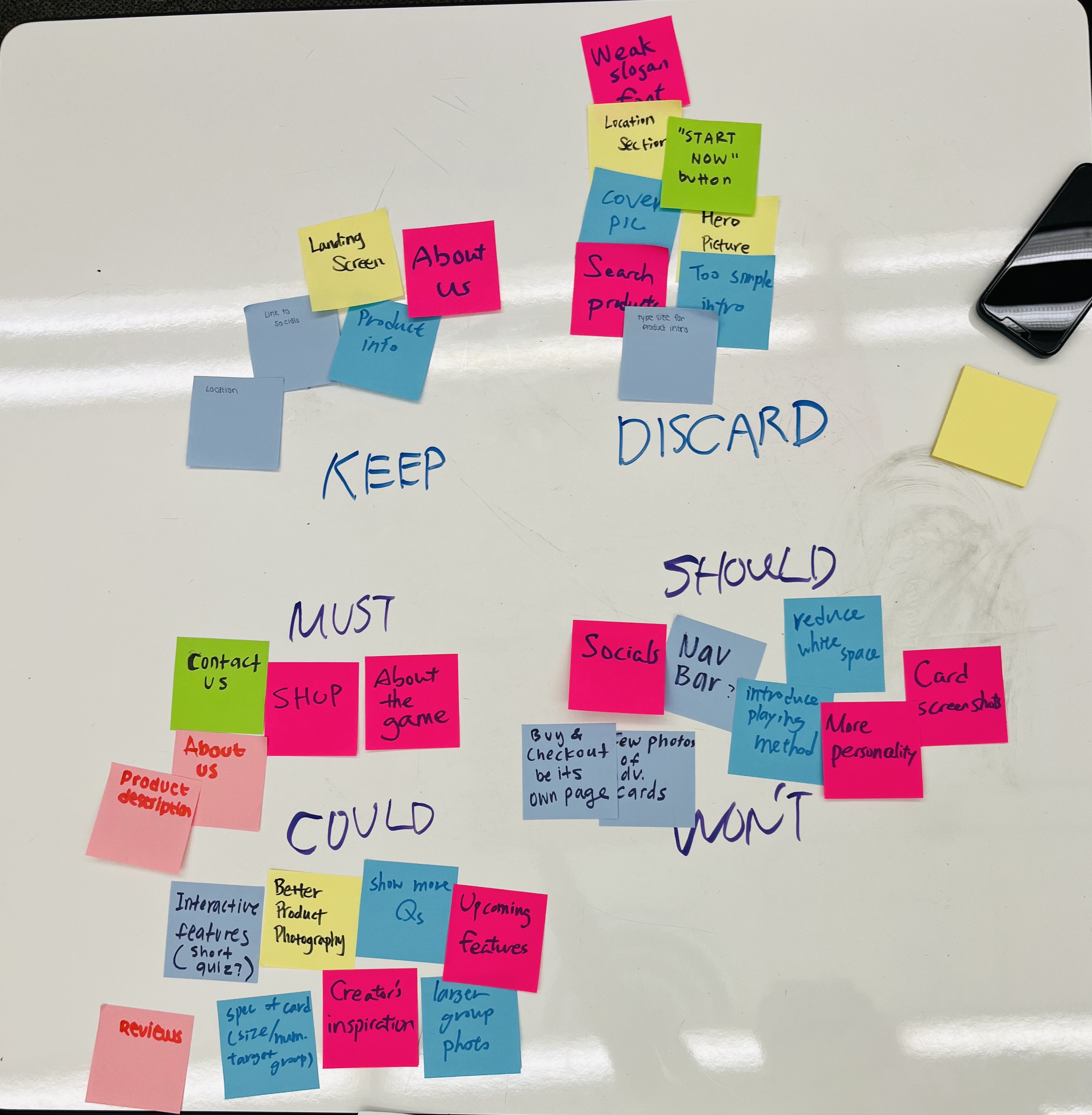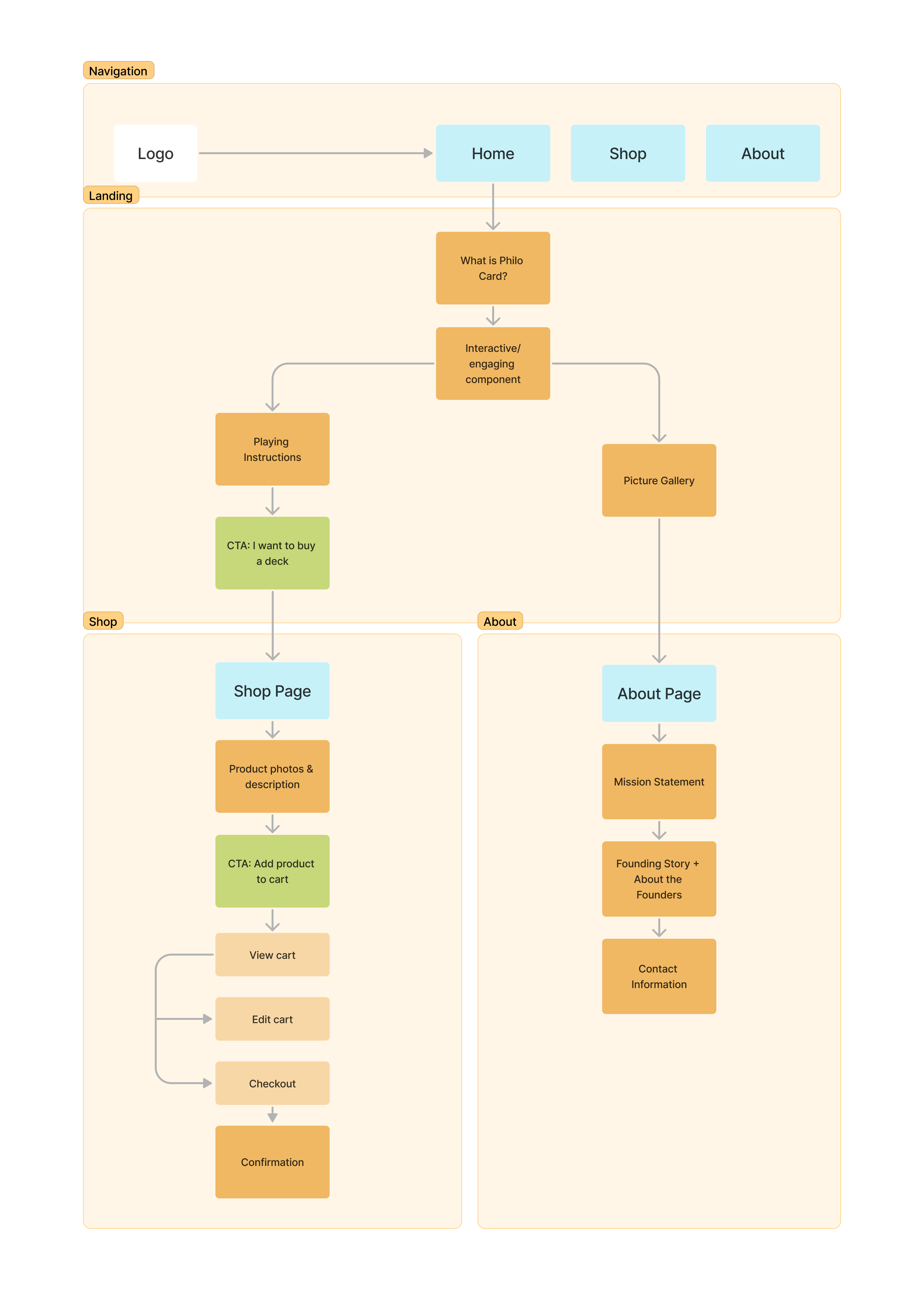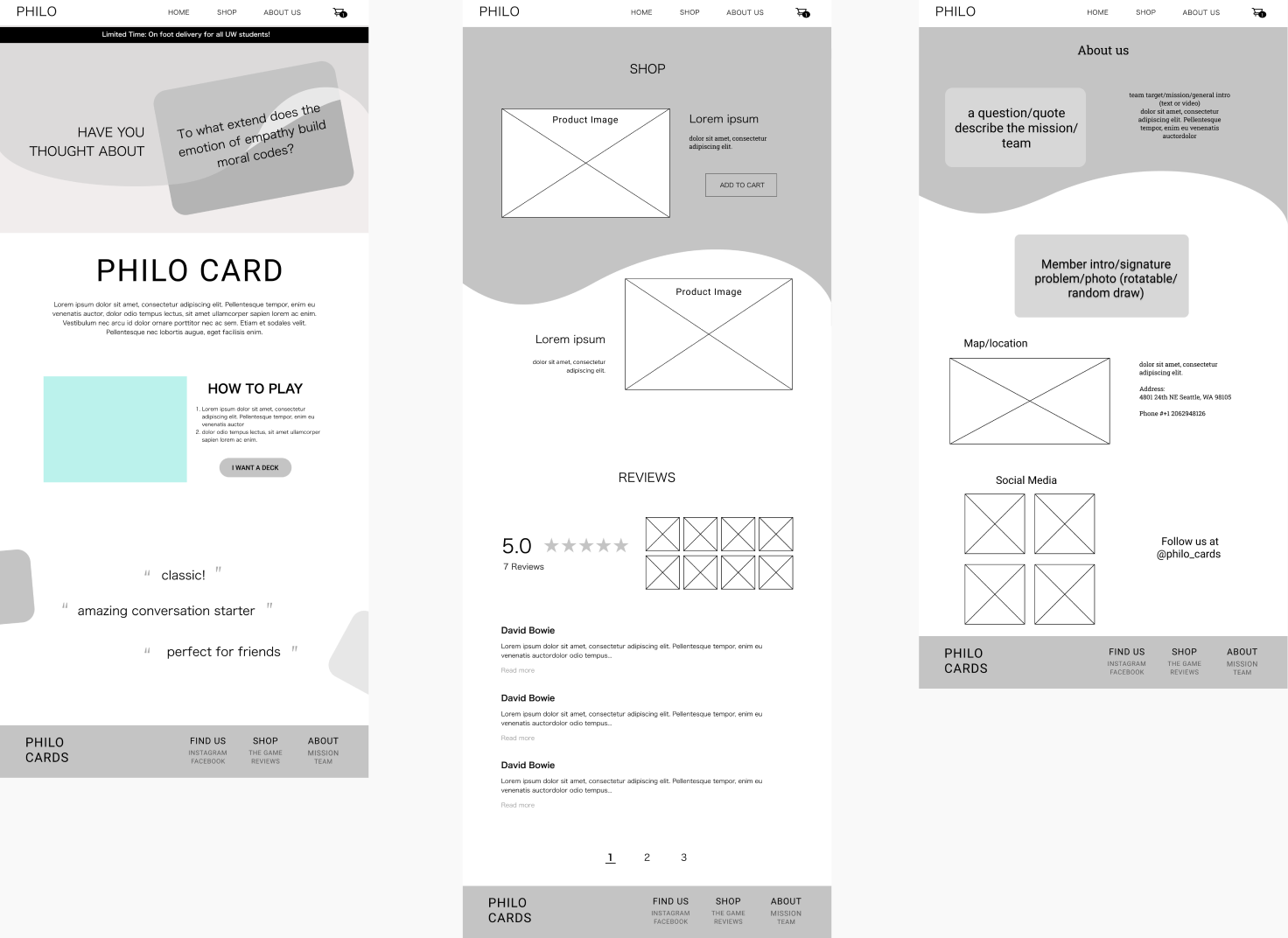Website Design
Philo Cards
Philo Cards is a student-startup company founded at the University of Washington. We re-designed a website for their product with the goal of promoting their values and business, as well as provide an accessible platform for customers to purchase a deck of Philo Cards.
5 weeks
UX Designer
5 Designers
Figma, FigJam, Miro, Pen & paper
